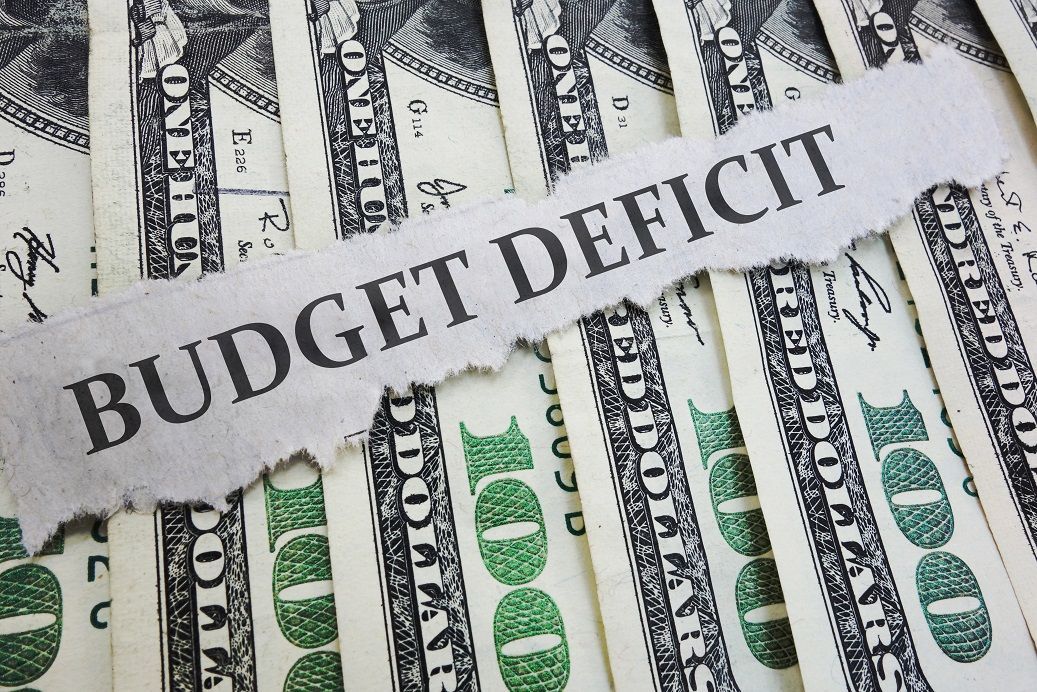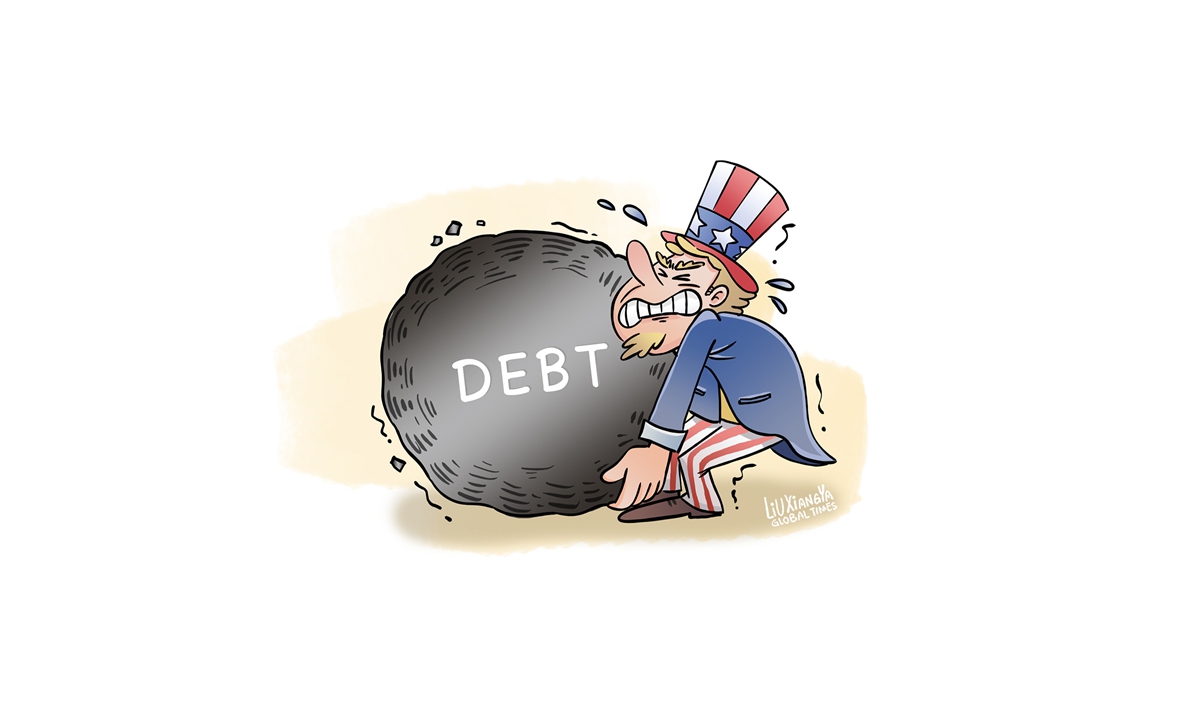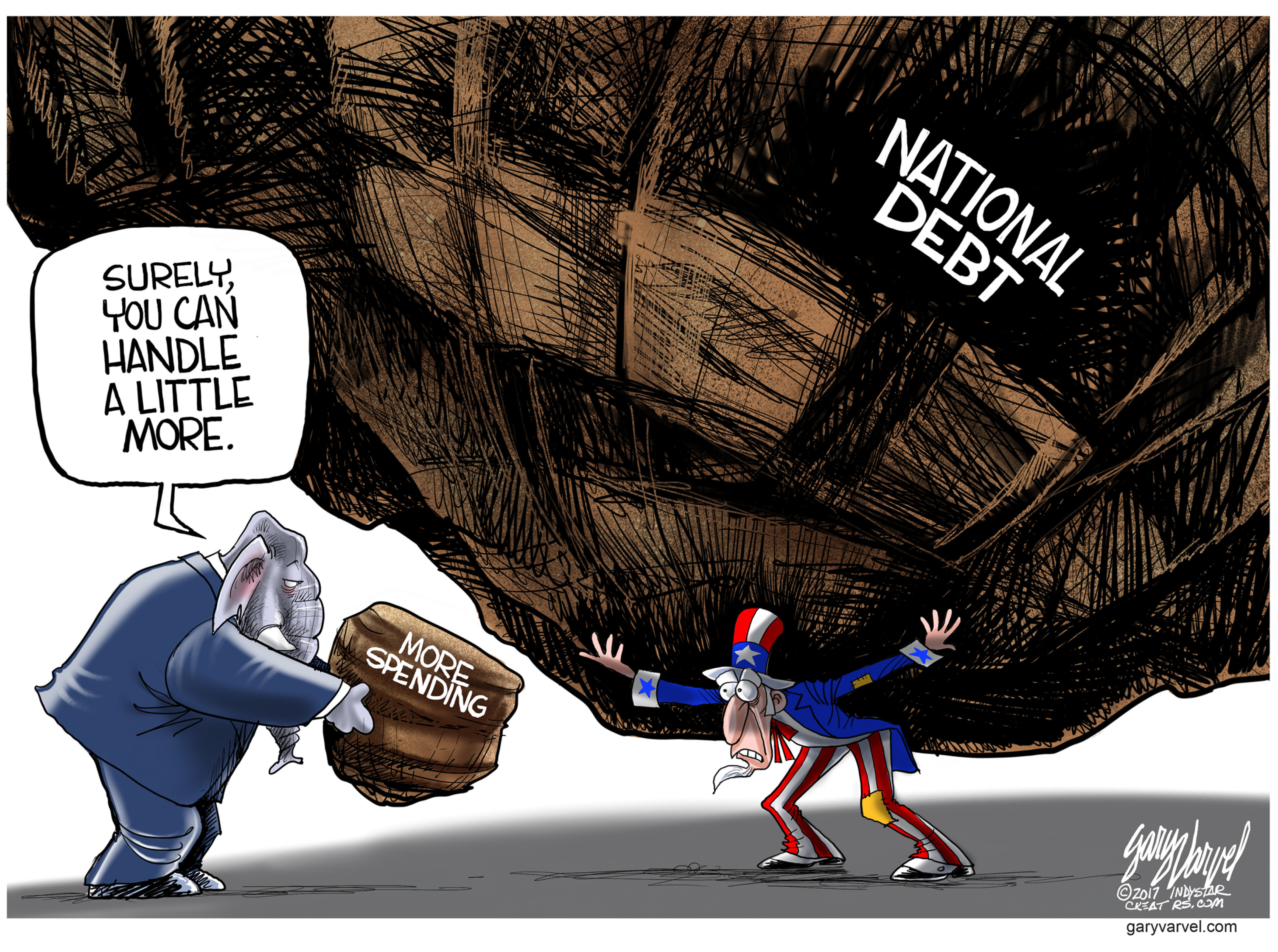Contrarian take:
— Sandeep | CEO, Polygon Foundation (※,※) (@sandeepnailwal) November 7, 2025
The Dollar is set to become more powerful than ever in the “short to medium term” — contrary to @RayDalio’s predictions.
Why? Stablecoins.
They don’t just create persistent demand for U.S. debt — they’re transforming the dollar’s relationship with the world from…
I specifically said “short to medium term”, long term debt to gdp ratio remains a huge concern to the dollar empire
— Sandeep | CEO, Polygon Foundation (※,※) (@sandeepnailwal) November 7, 2025
Stablecoins: Exoskeleton for the Dollar – or Digital Life Support?
When Sandeep Nailwal, CEO of Polygon Foundation, called stablecoins “Dollarisation 2.0,” he wasn’t just making a crypto-native hot take. He was poking at one of the deepest questions in macroeconomics today:
Is the US dollar entering a new golden age in digital form, or are stablecoins merely a glossy bandage on a structurally sick patient?
On one side you have Nailwal and a growing camp of technologists arguing that stablecoins are strengthening the dollar by exporting it, at light speed, to anyone with a smartphone. On the other side you have Ray Dalio and macro realists warning that no amount of clever plumbing can save a system drowning in debt.
To understand what’s really going on, we have to zoom out: from WhatsApp chats in Lagos and Buenos Aires to the balance sheet of the US Treasury, from DeFi protocols to BRICS diplomacy. Think of this as an MRI scan of the dollar’s digital body.
Dollarisation 2.0: From B2B Reserve Asset to B2C App Icon
For most of the post–World War II era, the dollar has been a B2B currency: the language of central banks, oil contracts, and cross-border settlement between large institutions. Ordinary people interacted with dollars mostly through banks, travel, or local black markets.
Stablecoins blow that model open.
-
As of late 2025, the global stablecoin market cap is roughly $300–310 billion, a record high and more than double its size from early 2024. (FinancialContent)
-
Monthly stablecoin on-chain transaction volumes are in the trillions of dollars, with over 200 million holders and tens of millions of active addresses using them. (PANews Lab)
-
Dollar-pegged coins dominate: Tether’s USDT alone is above $180 billion in market cap, and USDC is in the $70–75 billion range. (Kraken)
This is Nailwal’s point: these are not niche products for hedge funds anymore. In Argentina, Nigeria, Turkey, Lebanon, and beyond, millions of people are using USDT or USDC for savings, remittances, and everyday commerce. In many places, the “dollar account” is no longer a bank account—it's a stablecoin wallet.
That’s how the dollar is morphing from:
-
A reserve asset discussed in G20 communiqués
into -
A consumer app icon sitting next to Instagram and TikTok.
If Eurodollars were the offshore, interbank version of the dollar in the 1960s, stablecoins are the crypto-eurodollars of the 2020s—hyper-liquid, always-on, programmable units of USD that anyone can hold without asking permission.
Nailwal’s Bull Case: Stablecoins as a Dollar Exoskeleton
Nailwal’s thesis can be boiled down to this: stablecoins don’t replace the dollar; they upgrade it.
Supporters across X (formerly Twitter) give a few core reasons:
1. A New Demand Engine for US Treasuries
Most major fiat-backed stablecoins are backed by short-term US Treasuries and cash equivalents. For example, analyses from US policy institutes note that US dollar–backed stablecoins account for hundreds of billions in reserves, mostly Treasuries, effectively creating a new foreign demand channel for US government debt. (Brookings)
In other words:
-
Every new USDT or USDC issued typically corresponds to a dollar (or Treasury) held in reserve.
-
As demand for stablecoins grows globally, demand for Treasuries grows with it, helping keep US funding costs lower than they otherwise would be.
In this view, stablecoins are like a synthetic artery grafted onto the US debt system, carrying global savings directly into the heart of Washington’s bond market.
2. Dollar Railroads for the Global South
In Latin America and Africa, where inflation and currency crises are repeated visitors, stablecoins act as dollar railroads:
-
A freelancer in Lagos can bill a client in New York in USDC and get paid in minutes, skipping correspondent banks and punishing FX spreads.
-
A shopkeeper in Buenos Aires can stash savings in USDT instead of a rapidly devaluing peso.
-
Migrant workers can send remittances in stablecoins with lower fees and greater speed than traditional money-transfer services.
This isn’t theoretical; adoption data across the Global South show stablecoins making up a growing share of on-chain activity, especially in emerging markets where capital controls and fragile banking systems push people toward crypto rails. (TRM Labs)
In this sense, stablecoins export not just dollars but dollar stability.
3. Dollar as an API: Programmable Money
For developers, a stablecoin is not just a currency—it’s an API:
-
Smart contracts can hold, send, and borrow against USDC or USDT.
-
DeFi protocols treat stablecoins as base money for lending, trading, and yield strategies.
-
Businesses can integrate stablecoins into payroll, cross-border invoices, and on-chain treasuries.
The dollar used to be a spreadsheet row at a bank. Now it’s a programmable building block in global software. That creates network effects similar to the rise of TCP/IP or HTTP: the more systems speak “USD-stablecoin,” the harder it becomes for rivals to displace it.
4. Soft Power: Digital Dollar vs. Digital Yuan
Some US policymakers openly see dollar stablecoins as a geopolitical asset. Analyses by think tanks and former officials argue that if the US nurtures a safe, regulated ecosystem for USD stablecoins, it can outcompete China’s digital yuan and other state-backed digital currencies in global adoption. (Brookings)
In that world, the digital dollar doesn’t just survive—it tightens its grip as the default operating system for global value transfer.
From this vantage point, Nailwal’s “Dollarisation 2.0” looks less like a meme and more like a plausible road map.
The Dalio Counterpoint: You Can’t Tokenize Your Way Out of Arithmetic
Zoom out to the sovereign balance sheet and the story gets darker.
Ray Dalio has spent years warning that the US is in the late stages of a long-term debt cycle, likening the economy to a patient on the brink of a heart attack. The numbers are chilling:
-
US federal debt has surpassed $34–36 trillion and is growing at roughly $1 trillion every 90 days, by some estimates. (Facebook)
-
Interest payments are consuming an ever-larger share of the federal budget.
-
Dalio argues that unless the deficit is brought down to around 3% of GDP, the US faces a high risk of a fiscal or currency crisis within a few years. (Business Insider)
Now place stablecoins in that context:
-
Total USD stablecoin supply hovers around $300 billion. (FinancialContent)
-
That’s well under 1% of the total US debt stock.
In Dalio’s world, the stablecoin impact is:
A demand thimble poured into an ocean of dollar supply.
Critics of Nailwal’s optimism ask: even if stablecoins grow tenfold to $3 trillion, that’s still just a sliver of the overall debt. It helps at the margin, but it doesn’t change the underlying arithmetic of persistent deficits, political gridlock, and rising entitlement costs.
Dalio and others also worry that:
-
Political pressure to keep interest rates low could undermine the credibility of the Fed, driving investors into gold, commodities, and crypto as safe havens. (Financial Times)
-
Aggressive sanctions and financial warfare (e.g., on Russia) could encourage nations to build non-dollar rails, reducing long-term demand for Treasuries.
In that scenario, stablecoins might become escape pods rather than anchors—rails that make it easier for global capital to leave the dollar system once confidence breaks.
Voices of Agreement and Dissent
The online conversation around Nailwal’s claim mirrors this split.
The Optimists
Supporters argue that:
-
Everyday comfort with dollar denomination is rising. People in fragile economies feel safer holding USDT than their own currencies.
-
US debt is being “exported”—stablecoin users are effectively helping finance US deficits through the Treasury-backed reserves behind their tokens.
-
USD becomes a global “consumer product”, not just a reserve asset, reinforcing its network dominance.
-
P2P adoption creates grassroots support for the dollar, even where local governments are hostile to US policy.
In their telling, stablecoins are an exoskeleton around the dollar—augmenting its mobility, speed, and global reach.
The Skeptics
Critics counter that:
-
Stablecoins are still “a demand drop in a supply ocean” relative to the scale of US deficits.
-
The US banking system and Federal Reserve may not tolerate private issuers controlling a key slice of dollar rails indefinitely; regulation or a digital dollar (CBDC) could curb their role.
-
Excessive reliance on stablecoins could flood the world with even more fiat, accelerating the very devaluation they’re supposed to hedge.
-
In the long run, the same rails that carry USDT today can carry Bitcoin, gold-backed tokens, or BRICS-linked units tomorrow.
To them, stablecoins are less an exoskeleton and more like life support equipment—buying time for a patient whose illness remains untreated.
Multiple Lenses on the Same Beast
To really judge the Nailwal vs. Dalio tension, we have to look from several angles.
1. Economic Lens: Triffin Dilemma 2.0
The classic Triffin dilemma says: for a currency to serve as the world’s reserve, its issuer must supply enough of it to the world—usually via trade deficits or capital outflows. But too much supply eventually undermines confidence.
Stablecoins add a twist:
-
They increase foreign demand for dollars (and Treasuries) via reserves.
-
But they also make it easier for global investors to reprice the dollar in real time and exit if they lose faith.
It’s like giving the world a faster, more transparent version of the eurodollar system. That’s great when confidence is high—and brutal when it cracks.
2. Geopolitical Lens: Tool of Hegemony or Trojan Horse?
If the US plays its cards well:
-
Dollar stablecoins become instruments of soft power, extending inclusion and liquidity to the Global South.
-
US-aligned fintechs, exchanges, and payment firms become key nodes in the global financial grid.
-
Rivals find it harder to build alternative systems with similar UX and liquidity.
If it stumbles:
-
Overuse of sanctions and political pressure could push countries to develop non-dollar stablecoins and payment corridors.
-
Projects built on regional currencies or baskets (e.g., a BRICS or Gulf stablecoin) could slowly erode dollar share.
-
The very success of stablecoin rails may empower non-US issuers to innovate faster where regulation is looser.
In that case, stablecoins are a Trojan horse: they bring the dollar through the gates today, but tomorrow the same infrastructure can carry new monetary “soldiers.”
3. Crypto Lens: Bridge Currency or Transitional Fossil?
Within crypto, opinions split into tribes:
-
Pragmatists see stablecoins as the practical on-ramp that bridges traditional finance and DeFi.
-
Bitcoin and hard-asset maximalists argue stablecoins are just “fiat with better UX,” distracting people from learning to hold assets with capped supply.
-
DeFi builders rely on stablecoins as base collateral but worry about regulatory choke points and blacklisting risks.
In evolutionary terms, stablecoins might be:
-
The horse-drawn carriage between gold coins and railroads, or
-
The transitional fossil between legacy fiat and fully non-sovereign, algorithmically scarce money.
Which it is will depend on macro outcomes more than code.
4. Regulatory Lens: The GENIUS Act and Beyond
New US frameworks—like the GENIUS Act and related stablecoin regulation—aim to:
-
Require high-quality, transparent reserves.
-
Clarify who can issue dollar stablecoins and under what supervision.
-
Integrate stablecoins into the broader banking and payment oversight regime. (Brookings)
Done right, that could turn dollar stablecoins into robust, exportable financial infrastructure, with Washington retaining ultimate control over the underlying asset and legal regime.
Done poorly, overregulation could:
-
Push innovation offshore.
-
Encourage non-dollar or synthetic stablecoins outside US jurisdiction.
-
Turn the US from conductor of the digital money orchestra into a late-arriving guest.
Out-of-the-Box Angles: Where This Could Go
Let’s stretch the imagination a bit.
Dollar-as-a-Service
Think of the future dollar not as a currency, but as “Dollar-as-a-Service” (DaaS):
-
Any app can plug in via stablecoin APIs.
-
Treasury markets, credit rails, and even on-chain identity stack atop it.
-
The US government effectively exports a monetary operating system, not just green paper.
In that world, Nailwal is right: the digital dollar could be stronger than ever.
Shadow Central Banks
Large stablecoin issuers already look a bit like mini central banks:
-
They choose reserve composition.
-
They manage liquidity and respond to redemptions.
-
Their decisions impact yields and risk in short-term funding markets.
At scale, imagine a world where a handful of private issuers and protocols collectively hold several trillion in Treasuries. Their behavior could materially affect funding conditions for the US state.
That raises hard questions:
-
Who sets the rules when “monetary policy” is partially embedded in code?
-
How does the Fed coordinate, or conflict, with these quasi-shadow central banks?
Stablecoins as Exit Ramps
Finally, there’s a darker possibility:
If trust in US fiscal management erodes badly enough, stablecoins might be the smoothest exit ramp for capital fleeing the dollar:
-
Users could rotate from USDT/USDC into BTC, ETH, gold-backed tokens, or non-dollar stablecoins without touching the banking system.
-
The same P2P rails that now help dollarize the world would help de-dollarize portfolios at hyperspeed.
In that sense, stablecoins are not inherently allies or enemies of the dollar—they’re infrastructure. How they’re used depends on macro behavior and political choices.
Three Scenarios for the Next Decade
Putting it all together, we can sketch three broad scenarios.
Scenario 1: Digital Bretton Woods
-
The US embraces clear, smart stablecoin regulation.
-
USD stablecoins remain dominant, with trillions in circulation.
-
The US gradually reins in deficits, avoiding a sharp debt crisis.
In this world, stablecoins are exactly what Nailwal hopes: an exoskeleton that extends the dollar’s power, especially into the Global South and digital-native economies.
Scenario 2: Debt Heart Attack
-
Political gridlock prevents meaningful deficit reduction.
-
Investors worry about inflation, politicized monetary policy, and sanctions overreach.
-
Gold, Bitcoin, and non-dollar assets surge as hedges.
Stablecoins still matter—but mostly as bridge assets and exit ramps. Dalio’s warnings become reality, and stablecoins simply make the transition faster and more chaotic.
Scenario 3: Multipolar Stablecoin Planet
-
USD stablecoins stay large, but regional ecosystems take off: digital yuan, euro stablecoins, Gulf and BRICS baskets.
-
Corporates and citizens juggle several digital units, just as they use multiple messaging apps today.
-
The dollar remains first among equals, but no longer a near-monopoly.
Here, stablecoins don’t “save” or “kill” the dollar. They help build a multipolar monetary internet where power is more distributed.
So, Are Stablecoins Saving the Dollar?
The honest answer is: they’re buying it time—and leverage—but not a free pass.
-
In the short to medium term (2–5 years), Nailwal is likely right. Stablecoins expand the dollar’s reach, deepen demand for Treasuries, and embed USD into the software fabric of the global economy.
-
In the long term (5–15 years), Dalio’s arithmetic remains brutal. If the US can’t discipline its fiscal trajectory and avoid weaponizing its currency to the point that others defect, no clever digital wrapper will save the underlying asset.
Stablecoins are best understood as a new nervous system for the dollar—ultra-fast, hyper-connected, and global. Whether that nervous system belongs to an athlete entering a new peak—or a patient ignoring a looming heart attack—depends not on code, but on policy.
For now, “Dollarisation 2.0” is real. The question isn’t whether the dollar is going digital. It already has.
The question is whether Washington will use this digital reprieve to reform the body—or keep rearranging the wires while the engine overheats.
स्थिरकॉइन: क्या वे डॉलर की रीढ़ हैं या बस डिजिटल जीवन समर्थन?
जब पॉलीगॉन फ़ाउंडेशन के सीईओ संदीप नेलवाल ने “डॉलराइज़ेशन 2.0” शब्द का उपयोग किया, तो वे केवल एक क्रिप्टो-नेटिव विचार साझा नहीं कर रहे थे — वे आधुनिक अर्थशास्त्र के सबसे गहरे प्रश्नों में से एक को छू रहे थे:
क्या अमेरिकी डॉलर अपने डिजिटल रूप में एक नए स्वर्ण युग में प्रवेश कर रहा है, या स्थिरकॉइन (Stablecoins) बस एक बीमार प्रणाली पर चमकीला पट्टी (Bandage) हैं?
एक ओर नेलवाल और तकनीकी उत्साही हैं जो मानते हैं कि स्थिरकॉइन डॉलर को मजबूत बना रहे हैं — उसे प्रकाश की गति से हर स्मार्टफ़ोन तक पहुँचा रहे हैं। दूसरी ओर, रे डालियो और मैक्रो यथार्थवादी हैं जो चेतावनी देते हैं कि कोई भी तकनीकी “प्लंबिंग” (Plumbing) एक ऐसी अर्थव्यवस्था को नहीं बचा सकती जो ऋण के दलदल में डूब चुकी है।
आइए इस पूरे प्रश्न को कई कोणों से देखें — ब्यूनस आयर्स और लागोस के व्हाट्सऐप लेनदेन से लेकर अमेरिकी ट्रेज़री के बैलेंस शीट तक, और डेफाई प्रोटोकॉल से लेकर ब्रिक्स की कूटनीति तक।
डॉलराइज़ेशन 2.0: आरक्षित मुद्रा से ऐप आइकन तक
द्वितीय विश्व युद्ध के बाद से, डॉलर एक B2B मुद्रा रही है — यानी केंद्रीय बैंकों, तेल अनुबंधों और अंतरराष्ट्रीय व्यापार के लिए एक भाषा। आम लोगों का डॉलर से रिश्ता बैंकों या यात्रा के ज़रिए ही होता था।
स्थिरकॉइन ने इस समीकरण को उलट दिया है।
-
2025 के अंत तक, वैश्विक स्थिरकॉइन बाज़ार का मूल्य लगभग 300–310 अरब डॉलर है, जो 2024 की तुलना में दोगुना है।
-
हर महीने स्थिरकॉइन में ट्रिलियन डॉलर का लेनदेन हो रहा है, और 20 करोड़ से अधिक धारक हैं।
-
डॉलर से जुड़े कॉइन (USDT, USDC) का वर्चस्व है — USDT लगभग 180 अरब डॉलर, और USDC लगभग 70–75 अरब डॉलर तक पहुँच चुका है।
नेलवाल का कहना है कि अब यह सिर्फ़ ट्रेडर्स के लिए नहीं, बल्कि आम लोगों के लिए है। अर्जेंटीना, नाइजीरिया, तुर्की, लेबनान जैसे देशों में लाखों लोग स्थिरकॉइन का उपयोग बचत, भुगतान और रेमिटेंस के लिए कर रहे हैं। अब डॉलर सिर्फ़ बैंक में नहीं — यह एक ऐप आइकन बन चुका है।
अगर 1960 के दशक में “यूरोडॉलर” डॉलर का ऑफ़शोर संस्करण था, तो 2020 का “क्रिप्टो-डॉलर” उसी का अगला रूप है — तेज़, पारदर्शी और किसी भी अनुमति के बिना सबके लिए उपलब्ध।
नेलवाल का तर्क: डॉलर के लिए एक डिजिटल कवच
नेलवाल का कहना है — स्थिरकॉइन डॉलर को बदल नहीं रहे, वे उसे अपग्रेड कर रहे हैं।
1. अमेरिकी ट्रेज़री के लिए नई माँग
ज्यादातर स्थिरकॉइन अल्पावधि अमेरिकी ट्रेज़री बॉन्ड्स द्वारा समर्थित हैं।
हर नया USDT या USDC का निर्गमन ट्रेज़री में डॉलर की नई माँग पैदा करता है।
इससे अमेरिकी सरकार को सस्ते दरों पर ऋण लेने में मदद मिलती है — एक तरह का “वर्चुअस सर्कल।”
2. वैश्विक दक्षिण के लिए डॉलर की रेलमार्ग
जहाँ स्थानीय मुद्राएँ अस्थिर हैं, वहाँ स्थिरकॉइन एक डॉलर रेलमार्ग की तरह हैं:
-
लागोस का फ़्रीलांसर न्यूयॉर्क के क्लाइंट से USDC में भुगतान पाता है।
-
ब्यूनस आयर्स का दुकानदार अपनी बचत USDT में रखता है।
-
रेमिटेंस भेजने की लागत और समय दोनों घटते हैं।
यह केवल मुद्रा नहीं, स्थिरता का निर्यात है।
3. डॉलर एक API के रूप में
डेवलपर्स के लिए स्थिरकॉइन अब केवल मुद्रा नहीं, एक प्रोग्रामिंग इंटरफ़ेस हैं।
अब डॉलर केवल बैंक की स्प्रेडशीट नहीं — यह कोड में लिखा हुआ पैसा है।
4. भू-राजनीतिक शक्ति
कुछ अमेरिकी नीति-निर्माता स्थिरकॉइन को एक सॉफ्ट पावर टूल मानते हैं — खासकर चीन के डिजिटल युआन के मुक़ाबले में।
यदि अमेरिका स्मार्ट रेगुलेशन लाता है, तो डिजिटल डॉलर वैश्विक डिफ़ॉल्ट मुद्रा बन सकता है।
रे डालियो का प्रतिवाद: गणित से भागा नहीं जा सकता
डालियो चेतावनी देते हैं — अमेरिका अपने दीर्घकालिक ऋण चक्र के अंतिम चरण में है।
-
अमेरिकी ऋण 34–36 ट्रिलियन डॉलर पार कर चुका है।
-
ब्याज भुगतान बजट का बड़ा हिस्सा खा रहा है।
-
अगले कुछ वर्षों में एक “ऋण-जनित हृदयाघात” (Debt-Induced Heart Attack) संभव है।
अब इस संदर्भ में स्थिरकॉइन का आकार देखें — 300 अरब डॉलर।
कुल ऋण का एक प्रतिशत भी नहीं।
डालियो के शब्दों में, यह एक बूँद है ऋण के सागर में।
भले ही स्थिरकॉइन तीन ट्रिलियन तक पहुँच जाएँ, वे मूल समस्या — अत्यधिक खर्च और राजकोषीय अनुशासन की कमी — को नहीं बदल सकते।
सहमत और असहमत आवाज़ें
सहमत लोग कहते हैं:
-
आम लोग डॉलर में सोचने लगे हैं।
-
स्थिरकॉइन अमेरिकी ऋण को विश्वभर में बाँट रहे हैं।
-
डॉलर अब केवल मुद्रा नहीं, उपभोक्ता उत्पाद है।
-
यह अमेरिका के लिए “सॉफ्ट पावर” का नया रूप है।
असहमत लोग कहते हैं:
-
यह पैमाने की समस्या है — डॉलर के समुद्र में स्थिरकॉइन की बूँद।
-
अमेरिकी बैंकिंग व्यवस्था निजी कॉइनों के प्रभुत्व को सहन नहीं करेगी।
-
यह “फिएट की अधिकता” बढ़ाकर डॉलर को कमजोर कर सकता है।
-
भविष्य में यही नेटवर्क गैर-डॉलर कॉइन चला सकते हैं।
बहुआयामी विश्लेषण
आर्थिक दृष्टि: ट्रिफ़िन दुविधा का नया संस्करण
डॉलर को वैश्विक आरक्षित मुद्रा बने रहने के लिए दुनिया को डॉलर की आपूर्ति करनी होती है।
स्थिरकॉइन इस दुविधा को तेज़ बनाते हैं — वे माँग बढ़ाते हैं, पर पलायन भी आसान करते हैं।
भू-राजनीतिक दृष्टि: शक्ति या जाल?
यदि अमेरिका सही नीति अपनाता है, तो स्थिरकॉइन सॉफ्ट पावर का इंजन बन सकते हैं।
अगर नहीं, तो वही नेटवर्क प्रतिद्वंद्वी मुद्राओं के वाहक बन जाएँगे।
क्रिप्टो दृष्टि: पुल या भ्रम?
क्रिप्टो जगत में कुछ इसे फिएट और डेफाई के बीच का पुल मानते हैं,
जबकि बिटकॉइन समर्थक इसे “नकली स्थिरता” कहकर ठुकराते हैं।
नियामक दृष्टि: “जीनियस एक्ट” और उसका प्रभाव
अमेरिकी “GENIUS Act” जैसे प्रस्ताव स्थिरकॉइन के लिए पारदर्शिता,
पूँजी गुणवत्ता और नियामक स्पष्टता लाने की कोशिश कर रहे हैं।
सही नीति उन्हें अमेरिका का डिजिटल निर्यात उत्पाद बना सकती है।
गलत नीति उन्हें विदेशों में पलायन के लिए मजबूर कर सकती है।
नए कोण: भविष्य की संभावनाएँ
डॉलर-एज़-ए-सर्विस
भविष्य में डॉलर एक सेवा (Service) की तरह हो सकता है —
हर ऐप, हर गेम, हर वॉलेट “डॉलर API” से जुड़ा होगा।
अमेरिका फिर से दुनिया को एक मौद्रिक ऑपरेटिंग सिस्टम निर्यात करेगा।
छाया केंद्रीय बैंक
स्थिरकॉइन जारीकर्ता अब छोटे केंद्रीय बैंकों जैसे दिखने लगे हैं।
उनकी नीतियाँ अमेरिकी ट्रेज़री के बाज़ार को प्रभावित करती हैं।
प्रश्न यह है — जब मौद्रिक नीति आंशिक रूप से कोड में निहित हो,
तो नियंत्रण किसके हाथ में रहेगा — फेड या कोड?
पलायन का मार्ग
अगर डॉलर में विश्वास टूटा, तो यही स्थिरकॉइन सबसे तेज़ निकासी मार्ग होंगे।
लोग बैंकिंग सिस्टम से गुज़रे बिना ही बिटकॉइन, सोना या अन्य टोकन में भाग सकते हैं।
तीन संभावित परिदृश्य
-
डिजिटल ब्रेटन वुड्स
-
अमेरिका स्मार्ट रेगुलेशन लाता है।
-
डॉलर स्थिरकॉइन विश्वमान्य बनते हैं।
-
ऋण नियंत्रण में रहता है।
→ नेलवाल सही साबित होते हैं।
-
-
ऋण हृदयाघात
-
राजकोषीय अनुशासन विफल होता है।
-
मुद्रास्फीति और अविश्वास बढ़ता है।
-
सोना, बिटकॉइन और अन्य विकल्प उभरते हैं।
→ डालियो की भविष्यवाणी सच होती है।
-
-
बहुध्रुवीय डिजिटल विश्व
-
डॉलर प्रमुख रहता है, पर एकमात्र नहीं।
-
युआन, यूरो और ब्रिक्स कॉइन भी उभरते हैं।
→ दुनिया “मौद्रिक इंटरनेट” बन जाती है।
-
निष्कर्ष: डिजिटल राहत, स्थायी समाधान नहीं
संक्षेप में कहा जाए तो —
स्थिरकॉइन डॉलर को समय और साँस दे रहे हैं, पर मुक्ति नहीं।
-
अल्पकाल (2–5 वर्ष) में वे डॉलर को मजबूत बनाएँगे।
-
दीर्घकाल (5–15 वर्ष) में वही पुराना गणित — ऋण, मुद्रास्फीति और राजनीति — लौट आएगा।
स्थिरकॉइन को डॉलर की नई नसों की तरह देखें — तेज़, वैश्विक, प्रतिक्रियाशील।
अब सवाल यह नहीं है कि डॉलर डिजिटल हो रहा है या नहीं — वह हो चुका है।
सवाल यह है कि क्या वाशिंगटन इस डिजिटल राहत का उपयोग सुधार के लिए करेगा,
या बस तारों को सजाता रहेगा जबकि इंजन अब भी गरम हो रहा है।
Stablecoins: Exoskeleton for the Dollar – or Digital Life Support? https://t.co/GaF7WXBpBP
— Paramendra Kumar Bhagat (@paramendra) November 7, 2025
We were talking about you this morning. Barackface: Stablecoins: Exoskeleton for the Dollar – or Digital Life Support? https://t.co/GaF7WXBpBP
— Paramendra Kumar Bhagat (@paramendra) November 7, 2025
— Ray Dalio (@RayDalio) November 5, 2025





